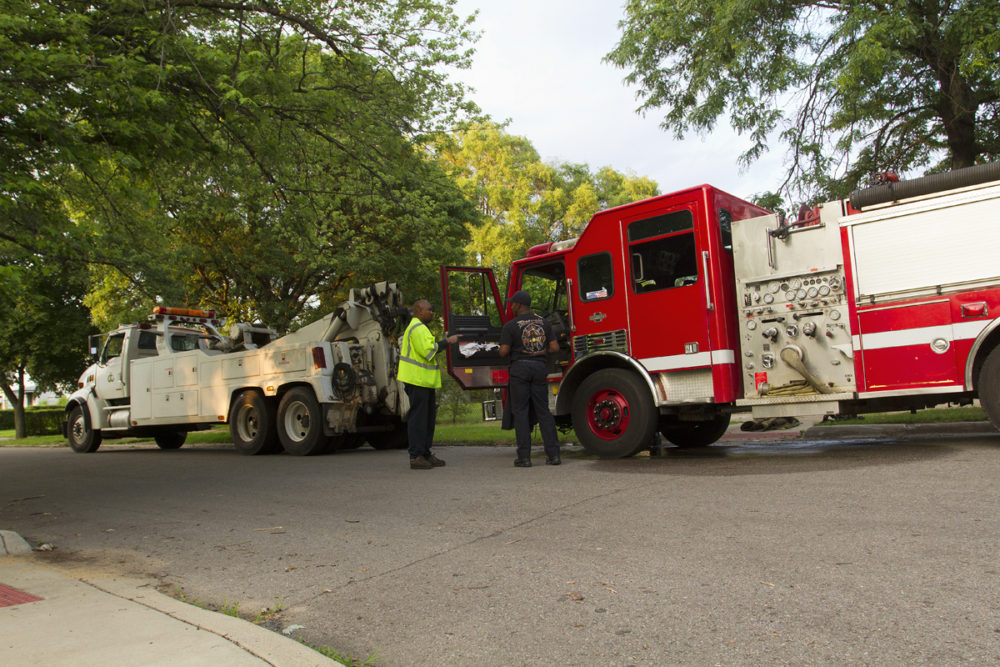
Part 1 of an ongoing series about the city’s defective fleet of rigs, poor management and shoddy maintenance.
Detroit firefighters were racing to a reported house blaze in an outdated fire engine on a recent Sunday afternoon when they heard a loud thud. Behind them was the rig’s gas tank, ruptured and spewing fuel onto the west-side street and into nearby drains, triggering a hazardous materials cleanup.
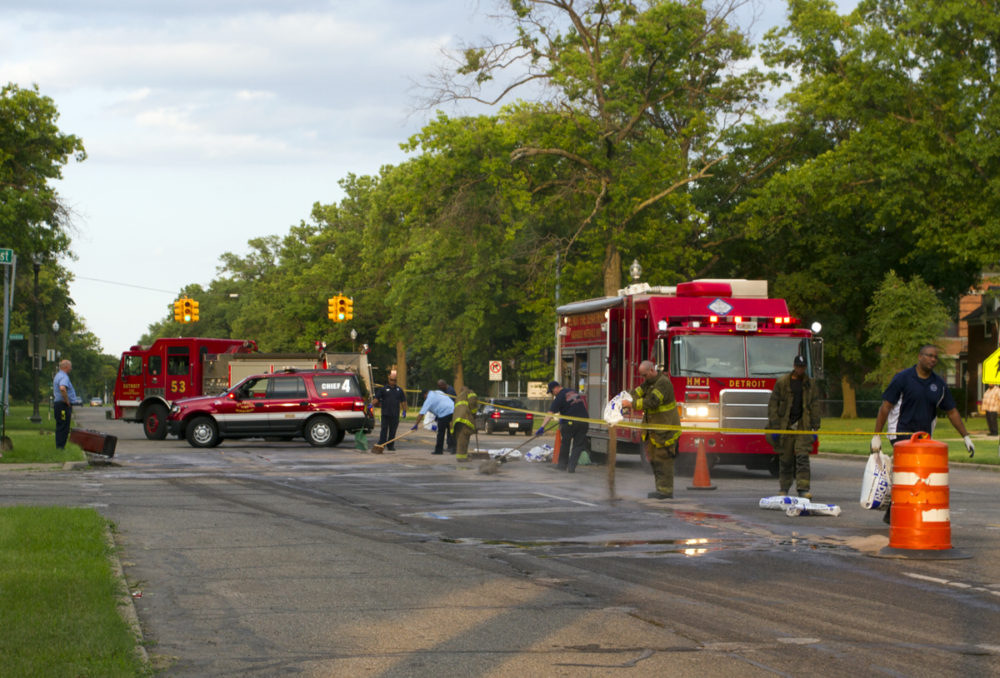
Turns out, the maintenance shop passed off the replacement rig to the crew of Engine #30 after crudely fastening the tank to the bottom of the rig with what appeared to be a frayed and broken seatbelt. Another crew refused to drive the pumper because of wiring problems and a windshield bound together by a sticky goo. Over the next two days, the fire engine was responding to emergencies when it overheated and wouldn’t start because of a broken alternator.
It’s an all-too-common problem in a city that routinely violates state and federal safety laws by sending dangerously defective ladder trucks and engines to fires in occupied houses, high-rise apartments and commercial buildings, delaying response times, hampering rescue efforts and endangering firefighters, an 18-month Motor City Muckraker investigation has found.
In fact, at least 47 people have been injured or killed in fires where defective rigs were sent since Jan. 1, 2014, according to an analysis of thousands of records.
When rigs break down or malfunction, fires often burn longer and spread to adjacent houses and buildings, devouring neighborhoods, driving up insurance rates and accelerating the decades-long exodus.
To blame are chronic issues that have plagued the fire department for decades – shoddy maintenance, poor management decisions and reckless budget cuts.
“Years of neglect and mismanagement have resulted in a situation where the fire department struggles every day to complete its mission,”wrote TriData, a national public safety consulting firm, in an in-depth report about the fire department’s serious troubles.
The reported added: “The DFD fleet is currently in a critical state, with chronic long-term management, maintenance, and replacement issues.”
After reviewing thousands of maintenance records, listening to more than 2,000 hours of scanner traffic and interviewing dozens of firefighters and apparatus experts, Motor City Muckraker has found:
- Nearly all of the city’s 60 fire engines and ladder trucks are outdated, unreliable and have a long history of serious, repeated mechanical problems, from failing pumps to defective transmissions.
- Fire rigs broke down en route to emergencies or at the scenes of fires more than 235 times since January 2014.
- Some rigs can’t pump water or raise a ladder, so their sole purpose is to ferry firefighters to fires.
- The fire department often defers routine maintenance until rigs break down, causing more expensive, time-consuming repairs.
- The city’s mechanics lack formal training, and the Fire Department was unable to provide records to show the mechanics are even certified.
- The city’s 368 high-rise buildings are especially vulnerable because half of the city’s ladder trucks, which are used to rescue people and extinguish fires from the air, don’t have operable aerials because they failed safety inspections. Among them is the ladder that protects downtown Detroit, the Cass Corridor and Midtown.
- Many hoses are rotting and breaking because the city has not inspected them in at least six years, despite national firefighting standards that call for annual testing.
- The city’s active fleet has dropped from 66 rigs in 2010 to 48 today, leaving many areas without immediate fire protection and forcing aging firefighters to battle blazes with less manpower.
- Without enough reserve rigs, firefighters whose ladder trucks and engines are broken down often rely on a mini-pumper that is the size of a pickup truck to respond to more than 100 reported fires in occupied houses and buildings, even though it was designed to extinguish car and trash fires and contributed to the death of a little girl in 2011.
- Not one of the city’s speciality rigs works.
buy clomid online https://www.conci.com/wp-content/languages/new/online/clomid.html no prescription
Detroit no longer has a foam truck for gas fires or a pumper to protect the city’s airport. And Detroit’s fire boat recently failed to pump water, rendering it useless.
No accountability

Since taking office in January 2014, Mayor Mike Duggan has distanced himself from the Fire Department’s troubles, contributing to low morale among firefighters and providing little oversight over a department long criticized for mismanagement and cronyism.
The mayor declined to comment for this story and barred everyone in the fire department, including the executive fire commissioner, from speaking to us. The city only responded to some written questions and violated the law by failing to turn over maintenance, safety and apparatus records as required under the state’s Freedom of Information Act.

The fire administration, led by Executive Commissioner Edsel Jenkins, who makes $145,000 a year, also threatened to punish firefighters suspected of providing us with photos, records and other information about the dangerous fleet, even sending top brass to fire stations to sternly reinforce the message. One whistleblower has already been disciplined this year.
Firefighters, who spoke on condition of anonymity for fear of reprisal, said the fleet is in serious disrepair.
“Every night, it’s like rolling the dice. You just hope and pray that your rig starts and the pumps work,” a firefighter for an east-side engine company told Motor City Muckraker.
The city was supposed to have 10 new fire engines on the road in June, but only three have arrived so far because of a bidding scandal that resulted in hundreds of change orders and substandard pumpers, which are too large for some fire houses, including downtown’s. (This story will be featured next week)
So disturbed by the frail fleet, then-Detroit Emergency Manager Kevyn Orr ordered an outside review of the Fire Department by Tri-Data, a leading public safety consulting firm. The findings were disturbing.
Consultants found “profoundly weak management” that is “deeply ingrained in the fire department culture.”
Duggan’s office declined to say whether the mayor read the report or is even familiar with it.
Rigs jeopardize safety
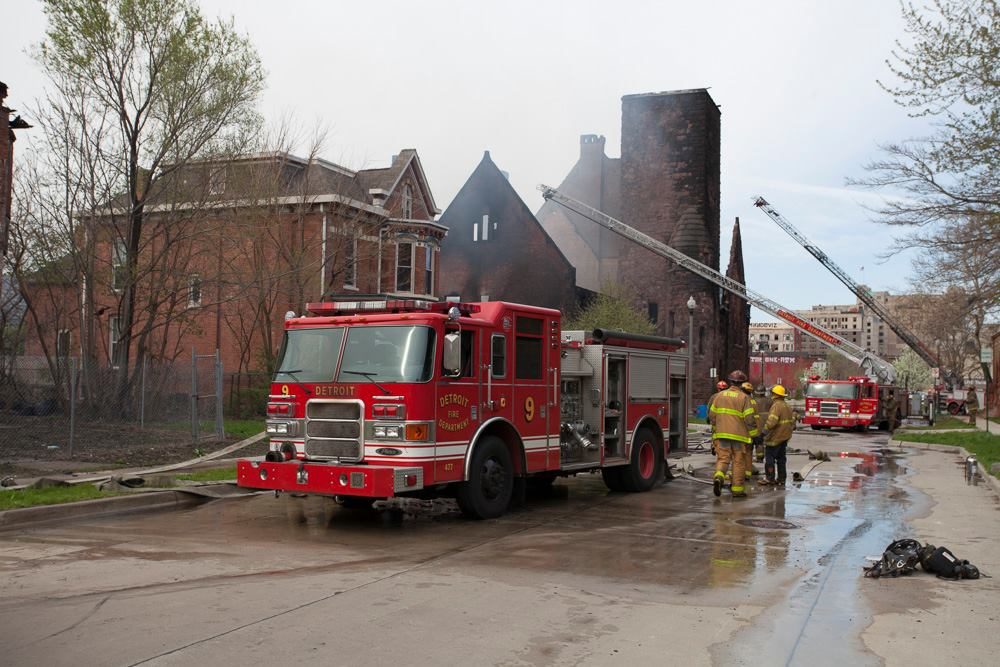
Detroit’s 46 fire engines, 18 ladder trucks and six squads are rundown and unreliable, often left in service until they break down, log books show. As a result, rigs are routinely sent to fires with bad brakes, defective oil gauges, faulty hydraulic systems, mismatched tires, broken pumps, leaking fluids, nonworking sirens and lights and patchwork repairs that often come undone during emergencies.
Maintenance problems are so pervasive that at least half of the rigs have missed runs because they couldn’t start at their quarters in the past 18 months, according to dispatch reports and log books. Nearly all of them have broken down en route to a fire or on the scene.
In fact, fire rigs malfunctioned at least 235 times during that period, forcing dispatchers to call for help from distant companies.
On an early January morning, Ladder 17, the second busiest truck in Detroit, malfunctioned at the scene of a west-side fire, and firefighters were unable to quell flames in time to search the house before it collapsed. Neighbor Mary Collins looked on in horror, saying people were inside the house.
“We were unable to do a thorough search due to the structural collapse,” a firefighter told dispatchers.
The city never called for an excavation crew to scour the debris for victims.
“I know there were people in that house,” Collins told us, wiping tears from her cheeks.
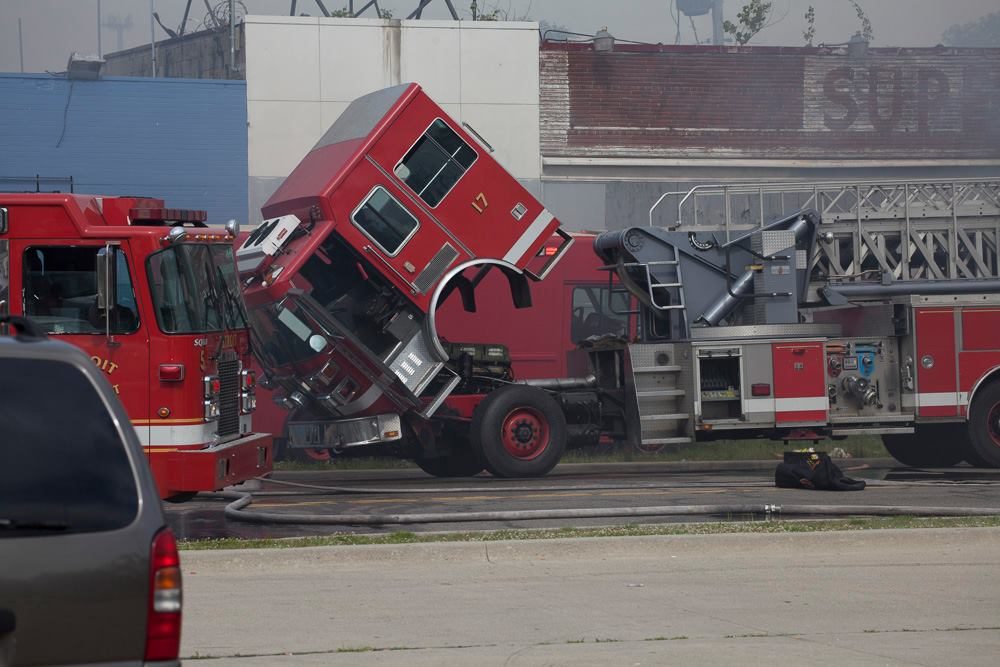
Although Ladder 17 was unable to pump water in September 2014, it was sent to house fires where people were reportedly trapped, contributing to the injuries of at least three people in three separate runs.
Two months earlier, dispatchers were unable to send a rescue squad to a house fire where people were suspected of being trapped on the 13000 block of Chelsea on the east side. An inoperable ladder truck and a fire engine that was unable to pump water were sent, and firefighters stood no chance of making a rescue.
“There’s supposed to be a guy in this house,” a firefighter radioed in to dispatch.
The house collapsed, and the city demolished it without looking for human remains. The fire also damaged a neighboring occupied house.
Ladder 8, one of the city’s busiest companies and the truck responsible for responding to Marathon Oil fires, missed at least 10 runs because the rig wouldn’t start at quarters since January 2014. Even though the aerial ladder was inoperable for most of that time, it was sent to hundreds of fires in houses, apartment buildings, schools, churches and commercial buildings. The rig continued to operate while leaking hydraulic fluid and malfunctioning at scenes.
Ladder 20, which protects downtown, Midtown and the Cass Corridor, has no working aerial but is still sent to reported fires in high-rise apartments, hotels and office buildings. On May 29, Ladder 20 was sent to an occupied apartment in the Cass Corridor and found the second and third floor raging with flames. Firefighters stood no chance without an aerial attack, so the chief called for a second-alarm and two more ladder trucks. One person was injured.
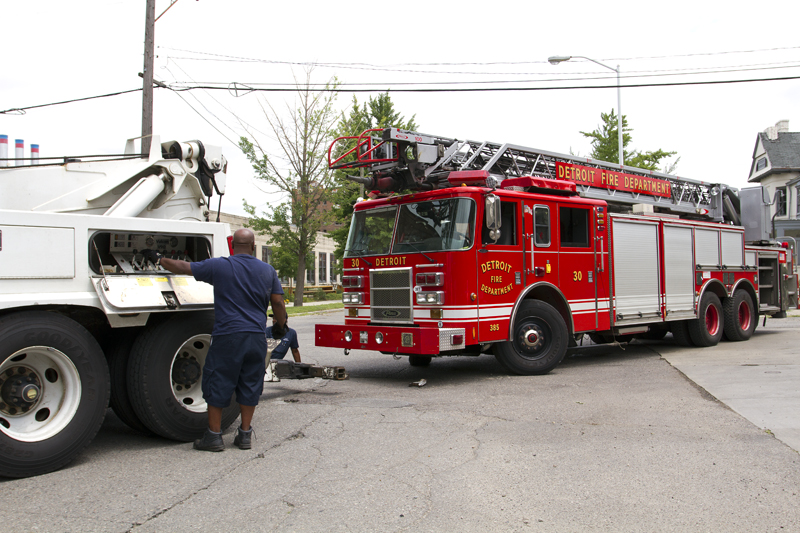
When Ladder 20’s tie rod snapped on the way back from a fire last year, the rig wasn’t replaced with another ladder truck. Instead, firefighters were given TAC2, a tiny rig designed to extinguish trash and car fires.
That didn’t stop dispatchers from sending TAC2 alone to reported fires at the Michigan Science Center in Midtown or an occupied apartment building in the Cass Corridor, even though it contributed to the death of a little girl in 2011.
Without enough replacement rigs, TAC2 has been used by more than a dozen fire companies whose engines or ladder trucks were inoperable. During the past 18 months, dispatchers sent the small truck alone to reported fires in high-rise apartments and condos along the riverfront on East Jefferson, even though it’s incapable of extinguishing large fires or pumping water to upper levels.
When the city runs out of rigs, firefighters are either sent home or are left to sit in their quarters with no way to respond to fires, leaving sections of Detroit without immediate protection.
That was the case in September 2014, when 16 rigs broke down in one week, leaving firefighters scrambling for help and contributing to significant damage to neighborhoods struggling to survive. At 2 a.m. on Sept. 6, Chief 5 pleaded with dispatchers to send more help as a blaze ripped through a multiple-family home.
“I have two occupied houses going,” the chief radioed in. “I’m going to have a bunch of houses going here. I’ve got embers everywhere. I need my engines here on the scene.”
Some rigs took more than 25 minutes to respond, about six times the national standard.
“I lost everything,” Juan Martinez said the next day, picking through the charred remains for any salvageable memories. “My heart is broken.”

As a serial arsonist torched dozens of houses and apartment buildings just east of the Palmer Park Golf Course last year, the Fire Department continued to rely on Ladder 18, even though it had a host of maintenance problems and a nonworking aerial.
During a six-month period beginning Sept. 1, 2014, Ladder 18 was sent to more than 125 working fires in houses and apartments, about a third of them occupied. Without the ability to attack flames from above, the fires often spread and forced firefighters to call on distant working aerials, causing significant damage to neighborhoods just east of Woodward between 6 and 7 Mile.
When Ladder 18 broke down on 7 Mile at Myers on March 6, firefighters called for a tow truck. But 12 minutes later, the rig started, and firefighters went back in service and continued to respond to fires because the next closest ladder company, #17, was riddled with maintenance problems and even caught on fire.
“We’re returning back to quarters,” a firefighter from Ladder 18 told dispatchers. “We’re back in service.”
Incompetent mechanics
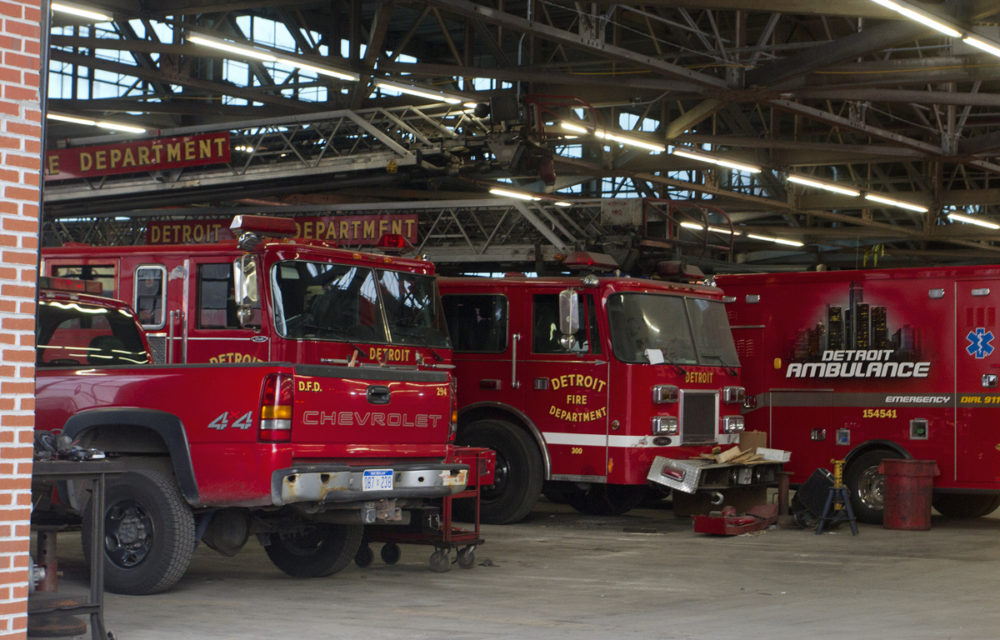
The task of fixing the failing fleet of rigs belongs to a maintenance crew that has been cut in half over the past four years.
Many of the mechanics lack formal training and are forced to learn on the job. It’s not even clear if the mechanics are certified to perform routine maintenance because the city was unable to provide the records to auditors last year, as required by law.
Consultants expressed shock by what they described as complacent, incompetent mechanics whose work is unreliable and shoddy.
“There is an unacceptable lack of activity in the shop,” Tri-Data wrote, adding that repairs “are either put off again and again, or never addressed at all” because of a “palpable sense of low morale and disincentive from some personnel, which may be attributed to years of operational dysfunction.”
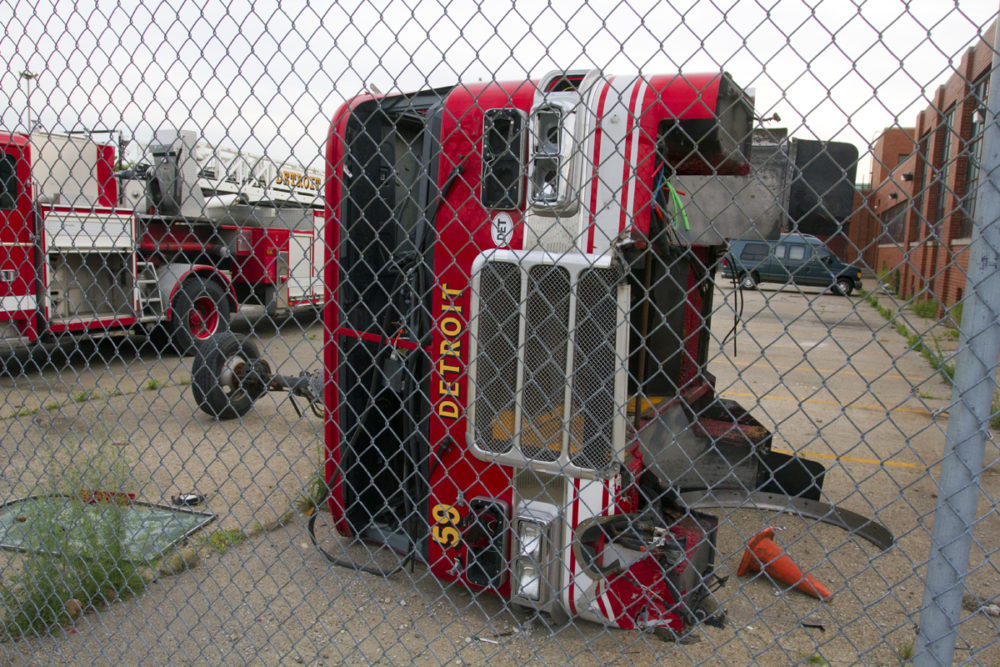
In charge of the fleet is Second Deputy Commissioner Craig Dougherty, who has ignored national standards by failing to ensure mechanics are qualified and that hoses, aerial ladders and pumps are tested annually. Consultants said the top brass also has failed to hold mechanics accountable and know very little about how rigs operate.
“We also became aware of acts of total disregard for procedures, safety practices and operator neglect, which in many cases was covered up, not reported in a timely manner, and not properly disciplined,” Tri-Data concluded.
The shop is so poorly managed that it often lacks basic parts and fails to keep proper records of repairs.
Last month, Engine 56’s crew was driving their rig from the shop after the alternator had been replaced when a loose fan spun off and ripped a hole in the radiator. Mechanics neglected to tighten all of the parts, and Engine 56 was stuck alongside the road for the second time in three days in need of a tow.
But it was stranded because the city’s tow truck broke down.
As part of a restructuring loan in the wake of the city’s bankruptcy, the fire department received $1.8 million last year to begin making repairs that should have been made years ago.
The rigs were a mess, and most needed dozens of repairs, from new engines to transmissions.
When Squad 4 was towed to Napa Auto Parts late last year, the mechanics found parts bound together with zip ties, and the engine was covered in sludge from long-neglected oil leaks. Numerous repairs were needed, many of which were avoidable with preventable maintenance.
“There are major oil leaks all throughout the engine,” the Napa mechanic noted on an invoice that ballooned to more than $50,000 in October 2014. The squad received a new engine block after just 113,000 miles, a fraction of the life-expectancy of a well-maintained unit.
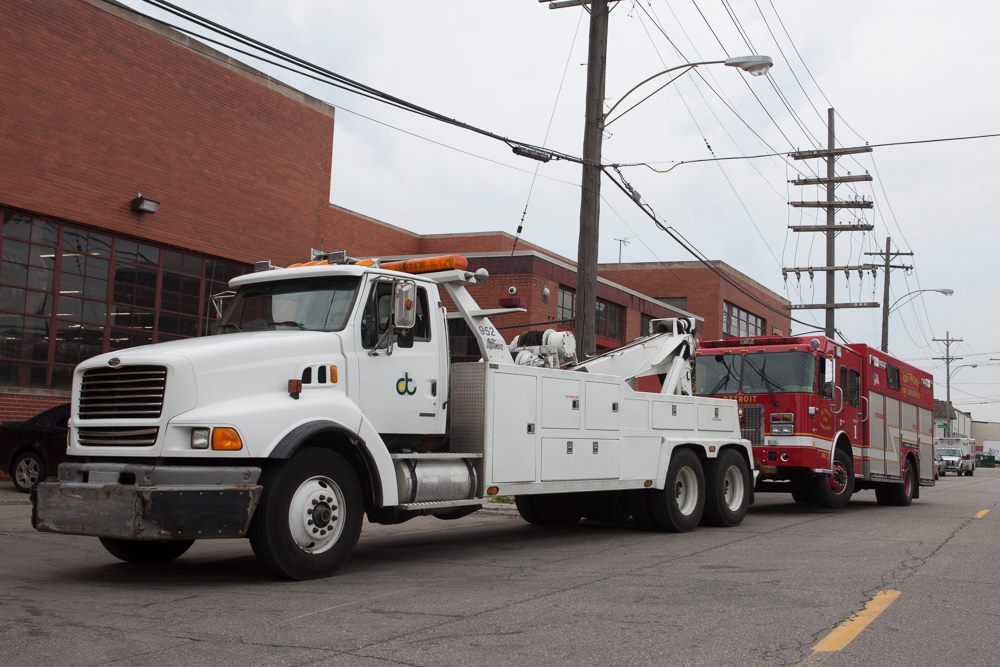
Ladder 6 was in such bad shape that it was considered a hazard and needed about 25 repairs or replacements. The rig was unstable because the city’s mechanics “bypassed” safety features, the private mechanic warned on maintenance records. The rig also lacked basic safety features such as a horn and emergency lights.
Despite the work, which cost $64,500, firefighters were still unable to use the aerial ladder because it has been unable to pass inspections.
“We’re about 40 years behind in technology, equipment and training,” Executive Commissioner Jenkins said during a bankruptcy deposition.
But in e-mails to Motor City Muckraker, the commissioner downplayed the problems, saying the Fire Department is on its way solving the problems with its fleet.
“The challenges of our fleet today are the result of many years of a lack of investment in new apparatus and the lack of a routine maintenance program,” Jenkins said. “We are investing significantly in new apparatus and have an excellent routine maintenance program. As the new apparatus arrives over time, these fleet issues will begin to go away.”
The city declined to back up those claims with records, and rigs are still breaking down at an unprecedented rate.
Help us sustain and improve this project with a donation.
Steve Neavling
Steve Neavling lives and works in Detroit as an investigative journalist. His stories have uncovered corruption, led to arrests and reforms and prompted FBI investigations.

23 Responses to "‘Rolling the dice:’ Detroit routinely sends dangerously defective rigs to fires"